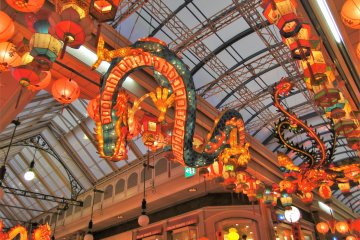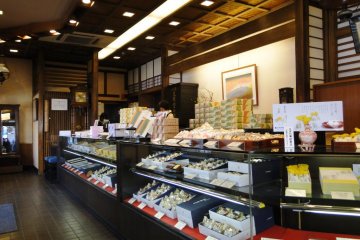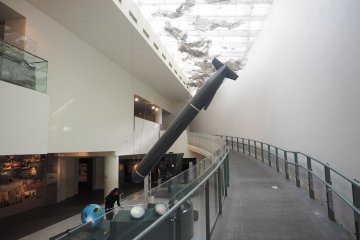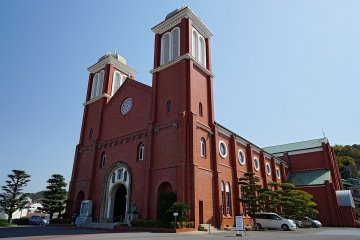

Nagasaki Shinchi Chinatown is the oldest of its kind in Japan. There are only three Chinatowns in Japan. The district in downtown Nagasaki extends over about a city block and is home to a variety of shops and restaurants. In addition to mainland China-inspired dishes such as Chanpon and Sara Udon can be found here as well as other Chinese foods and much more.
Visitors flock here every year for the food and especially for the New Year celebrations. The festival dates vary from year to year, but usually take place from late January to March. During the Chinese New Year celebrations, Chinatown becomes the center of the Nagasaki Lantern Festival, a popular event that sees thousands of lanterns illuminate the city.
Located a short walk from Shinchi Chukagai stop on the Nagasaki tram, lines 1 and 5.

데지마 와프는 음식점과 토산품점이 늘어서 있는 쇼핑가입니다~ 항구를 면하고 있어 바다가 보이는데, 경관이 아름다워 레스토랑과 주점이 특히 인기 있습니다. 이 곳에서 먹은 토루코 라이스!! 스파게티와 돈가스와 샐러드, 세 가지 음식이 나오는데 앞의 풍경과 같이 즐기면서 먹으니 더욱 맛있습니다!! 데지마에서도 가까우며 근처의 공원과 연결돼 있어 여유를 즐길 수 있습니다~~!!


The Chinzei Suwa Shrine has a long and complicated history. It began in 1614, the same year as Tokugawa's Edict Against Christianity. The shrine was established to unite the community against the growing population of Christian-converted Japanese in the area who the number of Shinto and Buddhist populations exceeded, and many local Christians resolved to destroy the shrine's progress until a priest, Aoki Kensei, came to Nagasaki in 1624 and stopped the interference. The shrine was later used as a census site in 1634 and required Christians to register and renounce their beliefs or face extreme punishments and, in severe cases, death.

The Nagasaki Atomic Bomb Museum houses artifacts, relics and information related to the tragic atomic bombing of August 9, 1945. It is the sister museum of the museum in Hiroshima, which also depicts the tragedies of atomic war and the suffering of the victims. These two places commemorate the Visitors to the arbitrary nature of the war and the victims of the aftermath. Many of the objects shown have a rousing effect, such as Burned clothes, broken toys or even a tattered water tower that once stood at Keiho Junior High School, only 800 meters from the hypocenter of the bomb. You can also find out what efforts were made to promote nuclear disarmament in the post-war period.

The Urakami Catholic Cathedral is located in Urakami, Nagasaki Prefecture, and was completely destroyed during the atomic bombing of Nagasaki in 1945. Despite the catastrophic loss of the symbol of their faith, the local Catholics urged the local government to allow them to return to the cathedral in the same location In 1959 the building was completed. Today it is a functioning church housed in a large, red brick European-style building. The cathedral also houses various relics that survived the atomic bomb attack. There is another fascinating facet of the cathedral's history: construction of the complex began in 1895, right where image-trampling ceremonies had previously been performed, to eradicate Christianity during the period of religious prohibition in Japan. During these ceremonies, people were forced to trample biblical images to expose secret Christians. The church was built in this place as a message of resilience.